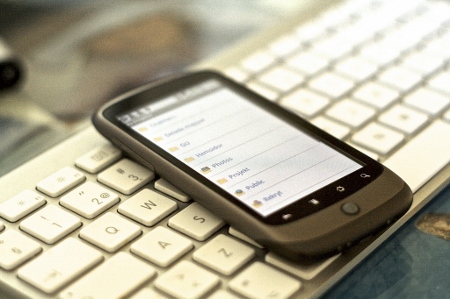People with a variety of communication barriers—particularly those who are Deaf, DeafBlind, or hard of hearing—can face a range of challenges in using standard telecommunications equipment. Indeed, communications barriers are part of the reason that the Deaf and DeafBlind communities have been frequently underrepresented in broader studies on social services. In order to truly understand the specific needs of these populations, researchers must use carefully designed tactics and tools that align with a range of approaches to communications.

Recently The Improve Group had the opportunity to partner with the Minnesota Department of Human Services (DHS) Deaf and Hard of Hearing Services Division to take a deeper, more comprehensive look at the complex telecommunications needs of those Minnesotans who are Deaf or DeafBlind, as well as those who have hearing loss or challenges with speech or mobility. More specifically, we examined the effectiveness of the state’s Telephone Equipment Distribution (TED) program, which distributes telephone and telecommunications equipment—like captioned or amplified phones and light-flashing ring signalers—to those who need them. You can read the final evaluation report here.
Our study assessed the challenges that these Minnesotans continue to face despite having access to the TED Program—and how other states are using federal funding to better meet the needs of their citizens. Our goal was to outline recommendations for revising the TED program to ensure that all qualifying Minnesotans can communicate effectively and have equivalent access to services and community life.
At the outset of this project, we knew we had to design creative, adaptable data collection tools to connect with affected community members and draw out new insights about their unique communications needs and preferences. However, we also wanted to make sure our data would reveal overarching trends in communications barriers facing Minnesotans across the state. We worked closely with our steering committee—which included representatives from DHS and members of The Commission of Deaf, DeafBlind, and Hard of Hearing Minnesotans—to develop our guiding research questions and data collection tools.
Together, we designed a unique survey with an accompanying video featuring someone translating each question into American Sign Language (ASL). The closed captioning video was designed to maximize accessibility, both for individuals who use ASL as well as those who are DeafBlind. We then partnered with social service providers, community-based groups, and additional interpreters who helped us implement the survey in a range of geographic regions across the state. We also used interviews to gather information from other states—including California, Kentucky, Maine, and New Mexico—on their approach to funding and operating parallel telecommunications programs.
Using our survey and interviews, we were able to reveal some key insights:
- Barriers to Communication: Cost was the most commonly reported barrier to accessing communication tools. And while the TED program covers the initial cost of some equipment, it doesn’t address costs associated with operating it, like having broadband Internet access. Alternatively, the state of California uses telecommunications funding for broadband infrastructure grants and loans, in order to expand access to high-speed Internet in rural areas.
- Communications Needs and Preferences: Many respondents are already using cell phones, computers, video phones, and tablets to communicate—but there is still a critical demand for more advanced or multi-purpose technologies (such as hands-free devices) that support greater independence.
- Making TED More Effective: Many respondents felt TED should cover or subsidize communication services or tools, especially cell phone and data plans or Internet service. We found that the Kentucky Telecommunications Access Program provides iPhones and 12 months of service to eligible constituents regardless of income. Also, TED could serve more Minnesotans by expanding the variety of equipment available—and increasing outreach among potential program participants.
After analyzing our data, we worked with the steering committee to outline concrete recommendations to improve services for Minnesotans—from offering service discounts and funding phone and Internet plans, to increasing awareness about TED through more focused communications, to advocating for increased Internet access in rural areas. Today DHS is using our evaluation findings to inform policy discussions on the need to advance our approach to telecommunications for those who cannot use standard equipment. We are honored to be able to help DHS make the case for expanding TED and programs like it—which help to ensure that all Minnesotans have a voice in their community.
